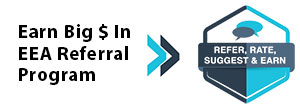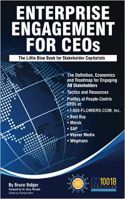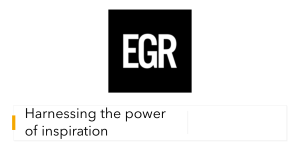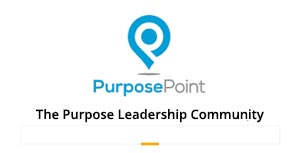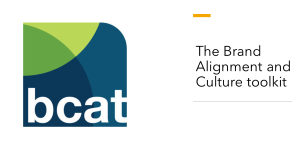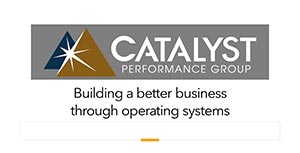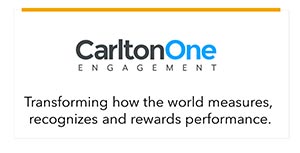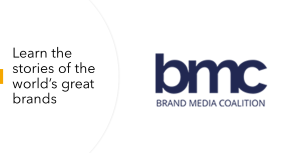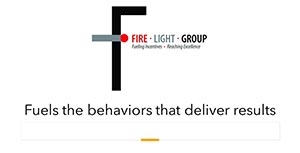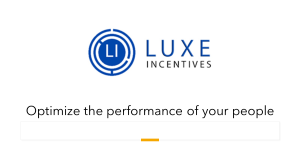Human Capital Metrics Investors Should Consider: Perspectives From an ISO 30414 Working Group Member
 The recently released ISO 30414 human capital standards aim to provide human resources professionals around the world comparable guidelines on effective practices and metrics. The standards are created under working groups of volunteers under the auspices of the International Organization for Standardization who consist of human resources practitioners, advisors and academics from around the world. Here’s what one of the members of the ISO 30414 working group thinks investors should know about companies based on these standards.
The recently released ISO 30414 human capital standards aim to provide human resources professionals around the world comparable guidelines on effective practices and metrics. The standards are created under working groups of volunteers under the auspices of the International Organization for Standardization who consist of human resources practitioners, advisors and academics from around the world. Here’s what one of the members of the ISO 30414 working group thinks investors should know about companies based on these standards. By Dr. Heiko Mauterer, Board Member, Senior Partner, at 4C GROUP
The Role of ISO Standards
Metrics Relevant to Investors
Click here to subscribe to the ESM weekly e-newsletter.
Often misunderstood in the world of ISO standards is that the true benefits focus on enhancing performance, not certifications. Standards bring together volunteer practitioners from around the world willing to share their extensive experience to establish effective practices, implementation steps, and metrics to help others benchmark their own strategies, tactics and metrics.
The Role of ISO Standards 
High-quality human capital internal or external reporting provides insights into how effectively an organization manages its people. In other words, organizations without this type of information almost always lack a related strategy and likely overlook critical risks and opportunities related to stakeholders. Practices and the metrics used to measure them address both risk (e.g., turnover, health and safety, succession gaps) and opportunity (e.g., productivity, skills, engagement, diversity). The more investors know about an organization’s human capital, the deeper their potential understanding of the organization’s human capital efficiency, complementing traditional financial KPIs, not to mention key risks and opportunities.
This will be a key topic of discussion on the upcoming Enterprise Engagement Alliance YouTube show Nov. 6 at 1 pm ET. Click here for more information.
Metrics Relevant to Investors
These recommended metrics, selected from others in the most recent update of the ISO 30414 human capital standards, reflect the organization’s ability to attract, retain, and deploy its people effectively, all crucial for sustainable value creation. If an organization lacks answers to more than a few of these question, that's a potential red flag.
1) Employee turnover / retention rate: A high turnover rate signals instability, loss of know-how, and increased recruitment and onboarding costs. Low turnover suggests a healthy culture and strong employee engagement, key indicators of long-term organizational stability.
2) Time to fill key positions / quality of hire: The speed and quality of filling critical roles affect an organization’s ability to sustain growth and operations. Efficient talent acquisition and strong onboarding practices indicate organizational agility and leadership depth.
3) Human capital productivity (output per employee): Productivity-per-employee demonstrates how effectively labor costs are converted into business output. Investors can assess whether workforce investments yield proportionate returns.
4) Succession coverage ratio: Measures how well key positions are backed up by trained successors. Strong succession planning reduces dependency on individuals and ensures business continuity, which investors value highly.
5) Health, safety, and well-being metrics: Indicators such as absenteeism rate, workplace incident rate, or well-being index reflect both employee sustainability and risk exposure. Poor results here can signal future financial and reputational liabilities.
6) Diversity and inclusion metrics: The proportion of women and underrepresented groups in leadership roles or the overall workforce. Diversity fosters innovation, mitigates reputational risk, and is a growing focus area in ESG-driven investment.
7) Cost per hire / recruitment efficiency: Reflects how efficiently a company attracts and integrates new talent. High recruitment costs relative to results may signal process inefficiency or brand weakness in the labor market.
8) Employee engagement: Engagement levels correlate strongly with productivity, customer satisfaction, and retention. A workforce that actively participates in training and development is better positioned for long-term performance.
9) Workforce competency/ skill rate: The extent to which current employee skills meet strategic needs is a forward-looking indicator of competitiveness. Large skills gaps imply higher training costs and operational risks in fast-changing industries.
10) Internal mobility: Indicates the organization’s ability to develop and advance its own people. A high internal promotion rate typically correlates with lower recruitment costs, stronger culture, and higher employee loyalty.
Enterprise Engagement Alliance Services
 Celebrating our 15th year, the Enterprise Engagement Alliance helps organizations enhance performance through:
Celebrating our 15th year, the Enterprise Engagement Alliance helps organizations enhance performance through:1. Information and marketing opportunities on stakeholder management and total rewards:
- ESM Weekly on stakeholder management since 2009. Click here to subscribe; click here for media kit.
- RRN Weekly on total rewards since 1996. Click here to subscribe; click here for media kit.
- EEA YouTube channel on enterprise engagement, human capital, and total rewards since 2020
 Management Academy to enhance future equity value for your organization.
Management Academy to enhance future equity value for your organization.3. Books on implementation: Enterprise Engagement for CEOs and Enterprise Engagement: The Roadmap.
4. Advisory services and research: Strategic guidance, learning and certification on stakeholder management, measurement, metrics, and corporate sustainability reporting.
5. Permission-based targeted business development to identify and build relationships with the people most likely to buy.
Contact: Bruce Bolger at TheICEE.org; 914-591-7600, ext. 230.


